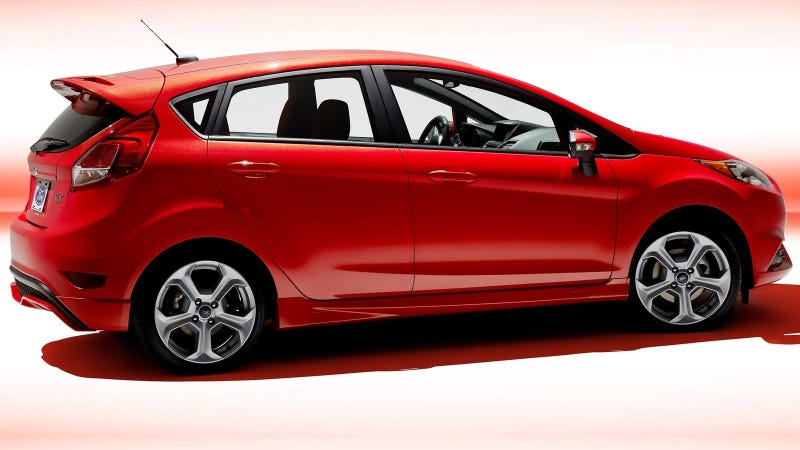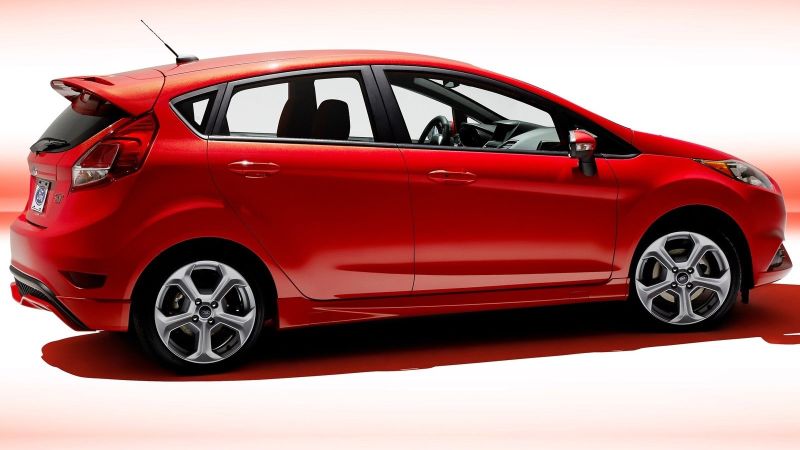
1. Ford’s decision to phase out nearly all its cars and sedans in North America, save for the Mustang (thank God) and the Focus Active (someone has to fight the Subaru Crosstrek), is a fascinating one because of all of the factors that went into it. One that cannot be ignored is the pressure Wall Street has Ford under these days.
Recall, if you will, the surprise ouster of Ford CEO Mark Fields last year. A big reason that happened was that Ford’s shareholders were disappointed with their returns, and a lot of that was because Wall Street analysts, in general, are not convinced the traditional American automakers have what it takes to weather the next recession, downturn or technological shift.
These companies are still viewed by Wall Street as old-school dinosaurs who needed bailout money (and even government loans in Ford’s case) just to survive the last economic crisis. They need to pivot and move fast and break things, the analysts say, just like Tesla, which is gaslighting the shit out of the entire established auto industry even though it’s never turned an annual profit and is struggling to build three models.
Advertisement
Be more like Tesla, they scream! Why can’t you be more like Tesla?
So I got the sense yesterday that getting rid of the admittedly weak-selling sedans and hatches (and some were definitely weaker than others, to be sure) wasn’t just a long-term business decision: it was meant to be the kind of BIG MOVE that the analysts and investors love, which is why it came in a Q1 report, of all places.
So in between editing stories about Nissan Skyline drama, I meant to ask around about this. And I was right. My industry colleague Nick Bunkley over at Automotive News beat me to it:
Advertisement
Who run the world? Private equity firms, and hedge funds.
2. The natural reaction to this news, which I had as well, is “we better hope gasoline stays cheap.” The concern is that the second gas prices spike upward—as they are historically known to do—Ford will be screwed for not having a fleet of small and efficient cars in its stable. After all, that’s what happened when gas prices went up in the 2000s. Since Americans are unable to think more than five minutes into the future, one could easily see people rushing to dump their SUVs and crossovers for tiny cars and hybrids, as they did a decade ago.
Ford seems like its plan to counter this is electrification, which also allows it to meet the electrified goals imposed by the government of China, now the world’s largest car market. This is an important line from that Q1 financial report that announced the small car death news yesterday:
Making a full commitment to new propulsion choices, including adding hybrid-electric powertrains to high-volume, profitable vehicles like the F-150, Mustang, Explorer, Escape and Bronco. The company’s battery electric vehicle rollout starts in 2020 with a performance utility, and it will bring 16 battery-electric vehicles to market by 2022.
Advertisement
We knew about a lot of this stuff already, as much of it was announced at this year’s Detroit Auto Show and even before that. But Ford’s plan seems to be “Hey, if gas prices shoot up, most of our cars will have hybrid options or be battery powered anyway, so who cares? It doesn’t matter that your car is large, it gets great fuel economy—or doesn’t use gas at all.”
(This is a move I support, in general. If you have a “normal” car, it may as well be a hybrid, and I’m excited to see someone finally apply electrification to performance cars we can actually afford. Like a Porsche 918, but in the $30,000 range.)
It’s a bold gambit, but it also hinges on people actually buying those hybrids and electrics, and the price of batteries going down. As it is now, most hybrids are more expensive than their conventional counterparts. But here’s another problem:
3. Ford’s lineup just got a lot more expensive! Right now the cheapest new car in the lineup is a Fiesta, starting at $14,205. Lose the sedans and the hatchbacks, and the cheapest crossover would be the EcoSport, which starts at $19,995.
Advertisement
With this move to crossovers, trucks and SUVs, American automakers are basically dumping the idea of a good, affordable new car—the kind you buy your teenage kid or get on a budget with a solid warranty. We’re ceding it to the used car market, or the Asian automakers who are still bothering to make small cars. (For now!) I get why it’s happening, but it is kind of sad and dismaying to see the cheap new car market start to evaporate, leaving those buyers in the lurch.
I suppose Ford’s answer to this trend is to just have some of those new car buyers sign up for those 84-month, 12 percent interest car loans like everyone else is doing. Nothing bad could happen there, right?
It’s not like subprime markets in other sectors have ever imploded dramatically and left the rest of the economy in shambles. We’re fine! Everything’s fine.















